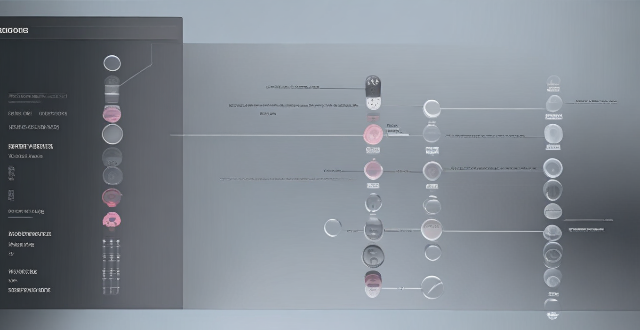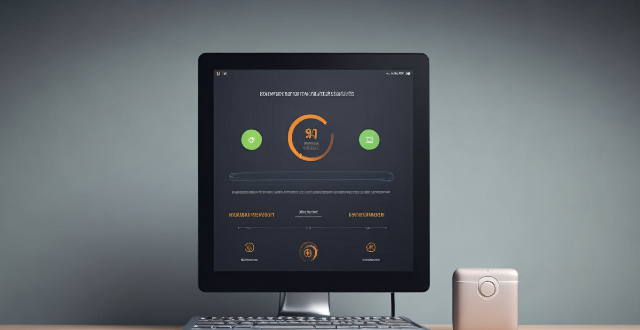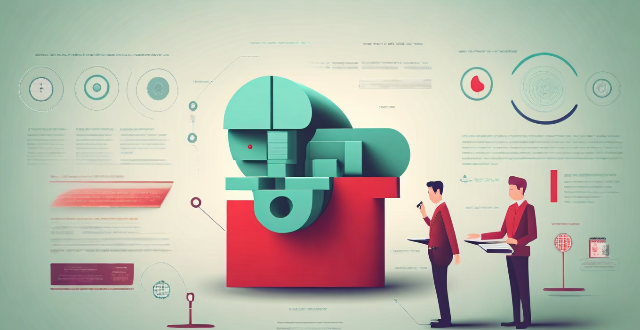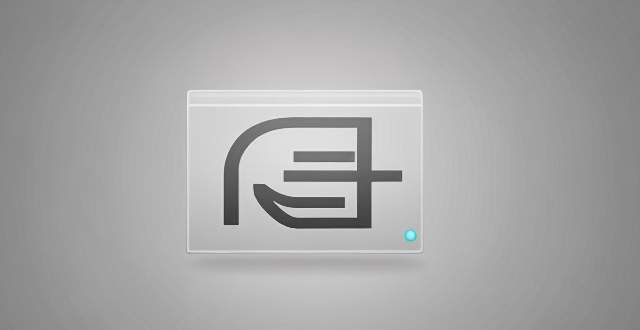Professional Protector

Can I apply an iPhone screen protector myself, or should I seek professional help ?
Applying an iPhone screen protector is a task that many people can do themselves with the right tools and instructions. However, it depends on your level of comfort and experience with such tasks. Here are some points to consider: Reasons to Apply Screen Protector Yourself: - Cost-effective: Doing it yourself can save you money compared to paying a professional. - Convenience: You can do it at your own pace and on your own schedule. - Satisfaction: There's a sense of accomplishment when you successfully apply a screen protector yourself. Reasons to Seek Professional Help: - Risk of Bubble and Dust: Professionals have the expertise to minimize bubbles and dust getting trapped under the protector. - Warranty or Guarantee: Some professionals offer warranties or guarantees for their work. - Time-saving: If you're not confident about doing it yourself, it might be quicker to have someone else do it. How to Apply Screen Protector Yourself: 1. Clean the Screen: Use the included wipes or a microfiber cloth to clean the screen thoroughly. 2. Peel Off the Backing: Carefully peel off the backing from the screen protector without touching the adhesive side. 3. Align and Place: Align the screen protector with the iPhone's screen and gently place it down. 4. Smooth Out Bubbles: Use a soft cloth or a squeegee to smooth out any bubbles or wrinkles. 5. Let It Sit: Allow the screen protector to set for a few hours before using the phone.

How often should I replace my iPhone screen protector ?
This article discusses the frequency of replacing your iPhone screen protector, which depends on various factors such as the type of screen protector used, how well you take care of it, and the environment in which you use your phone. There are mainly two types of screen protectors available for iPhones: plastic and glass. Plastic screen protectors are cheaper but offer less clarity and touch sensitivity, while glass screen protectors provide better clarity, touch sensitivity, and durability but are more expensive. The article also provides signs that indicate it's time to replace your screen protector, such as visible scratches or cracks, reduced clarity or touch sensitivity, and bubbling or lifting edges. Best practices for replacing your screen protector are also discussed, including choosing a high-quality screen protector, cleaning your iPhone screen thoroughly before applying a new screen protector, following the installation instructions carefully, and considering professional installation if you're not confident about doing it yourself.

What is the best iPhone screen protector ?
The best iPhone screen protectors include OtterBox Amplify Glass, Spigen NeoFlex, ZAGG InvisibleShield, Tech21 Evo Check, and Belkin Anti-Glare. These options offer features such as durability, sensitivity, transparency, compatibility with cases and Face ID, advanced technology for military-grade protection, customizability, impact protection, bubble-free application, scratch resistance, reduced glare, and increased privacy. When choosing a screen protector, consider your specific needs and preferences to find the one that works best for you.

How do I clean my iPhone screen protector ?
## How to Clean Your iPhone Screen Protector Cleaning your iPhone screen protector is crucial for maintaining display clarity and touch responsiveness. Over time, dust, dirt, and fingerprints can accumulate, reducing visual quality. Here's a guide on how to clean it effectively: ### Tools Needed - Microfiber cloth - Distilled water - Mild soap or specialized cleaning solution - Soft-bristled brush (optional) - Razor blade or plastic spudger (for stubborn particles, use with caution) ### Cleaning Steps 1. **Power Off**: Turn off your iPhone to avoid accidental taps or sensitivity issues. 2. **Remove Loose Particles**: Tap the screen protector edges against a soft surface to dislodge loose particles. Use a soft-bristled brush for stubborn pieces. 3. **Wet Cloth**: Lightly dampen a microfiber cloth with distilled water. 4. **Apply Cleaning Solution**: Apply mild soap or a specialized solution to the cloth instead of directly on the screen protector. 5. **Wipe**: Gently wipe in circular motions, paying extra attention to smudges or fingerprints. 6. **Dry**: Use a dry part of the cloth to remove moisture, ensuring no water streaks remain. 7. **Deal with Stubborn Marks**: Use a cleaning pen or specialized solution for difficult marks, following product instructions. 8. **Reattach Screen Protector**: If removed for cleaning, reapply carefully, ensuring proper alignment. 9. **Power On and Test**: Turn your iPhone back on and check touch sensitivity and screen clarity. ### Precautions - Avoid harsh chemicals or abrasive materials to prevent scratches or damage. - Do not press too hard when wiping to avoid lifting or breaking the screen protector. - Consult manufacturer recommendations if unsure about using a particular cleaning product. By following these steps, you can maintain a clean and clear iPhone screen protector for an optimal viewing experience.

How many times can I reuse an iPhone screen protector ?
The article provides a detailed overview of how many times an iPhone screen protector can be reused, depending on factors such as quality, type, usage conditions, cleanliness, adhesiveness, and damage. It suggests that while it is possible to reuse a screen protector under certain circumstances, it is important to consider these factors before deciding whether to reapply or replace it. The article also highlights signs that indicate it's time for a new screen protector, such as reduced clarity, loss of adhesion, and visible damage. Overall, the article emphasizes the importance of taking good care of your screen protector and replacing it when necessary to ensure the protection and appearance of your iPhone's display.

Will an iPhone screen protector prevent all scratches and cracks ?
An iPhone screen protector is a thin layer of material that is applied to the surface of an iPhone's display. It can prevent minor scratches and cracks, but it cannot prevent all damage. A high-quality screen protector can effectively prevent minor scratches from occurring on the surface of the iPhone's display. While a screen protector can help to prevent minor cracks caused by small drops or bumps, it may not be able to prevent more severe damage resulting from larger impacts or falls onto hard surfaces. Even the best screen protectors have their limitations and are not designed to withstand extreme force or repeated impacts. To maximize the lifespan of your iPhone's display, it is recommended to use a high-quality screen protector in conjunction with a protective case and to handle your device with care.

Does an iPhone screen protector affect touch sensitivity ?
The article discusses whether iPhone screen protectors affect touch sensitivity. It mentions that there are two main types of screen protectors: plastic and glass, and several factors can influence how much a screen protector affects touch sensitivity, including thickness, material, and quality. While some users report decreased touch sensitivity when using a screen protector, many others find that it has little to no effect on their device's touch responsiveness. It is recommended to choose a reputable brand and consider factors like thickness and material when selecting a screen protector to ensure the best possible user experience.

How long does it take for an iPhone screen protector to dry/cure ?
This guide discusses the drying time of different types of iPhone screen protectors, including plastic (PET) and tempered glass. It also provides tips on how to ensure proper curing, such as avoiding touching or exposing the phone to water or heat during the curing period. Overall, the drying time for an iPhone screen protector can range from 24-72 hours, depending on the type of material used. By following the tips provided, users can ensure that their screen protector cures properly and provides optimal protection for their device's display.

Is it necessary to remove the old screen protector before applying a new one ?
Removing an old screen protector before applying a new one is generally recommended for better adhesion, cleanliness, and accuracy. While there may be some reasons not to remove the old protector, such as time-saving and risk of damage, these can often be addressed with proper techniques and tools. Overall, removing the old screen protector ensures that your new one adheres smoothly and provides optimal protection for your device's display.

Can I use any screen protector for my iPhone model or are they specific ?
Screen protectors are indeed specific to each iPhone model due to differences in size, shape, and design elements such as notches or camera cutouts. To choose the right screen protector for your iPhone model, check compatibility, consider quality and material, look for reviews and ratings, check the installation method, and look for a warranty or return policy.

Will a screen protector affect my iPhone's battery life ?
A screen protector does not directly affect an iPhone's battery life, but certain types may have indirect effects. To optimize battery life, users should adjust screen brightness, turn off unnecessary features, use power-saving modes, regularly update software, monitor app usage, maintain proper storage space, replace old batteries, and seek professional help when needed.

Are expensive iPhone screen protectors worth it ?
When it comes to protecting your iPhone's screen, there are a plethora of options available in the market. One of the most common types of screen protectors is the tempered glass screen protector. These screen protectors are made from a special type of glass that is designed to be more durable and resistant to cracks and scratches than regular glass. However, they can be quite expensive compared to other types of screen protectors. One of the main advantages of expensive iPhone screen protectors is their durability. These screen protectors are made from high-quality materials that are designed to withstand impacts and resist scratches. Another advantage of expensive iPhone screen protectors is their clarity. These screen protectors are designed to be crystal clear, which means that they won't interfere with your ability to see the display on your iPhone. Finally, expensive iPhone screen protectors are also designed to be highly sensitive to touch, which means that you won't experience any lag or delay when using your iPhone's touchscreen. The biggest downside of expensive iPhone screen protectors is their cost. These screen protectors can be quite pricey compared to other types of screen protectors, which may not be feasible for everyone's budget. Another potential downside of expensive iPhone screen protectors is their installation process. Some of these screen protectors can be difficult to install properly, which may require some practice or professional help. Finally, even the most expensive iPhone screen protectors have a limited lifespan. Over time, they may become scratched or damaged, which means that you'll need to replace them periodically. In conclusion, whether or not expensive iPhone screen protectors are worth it depends on several factors. If you value durability, clarity, and touch sensitivity above all else, then an expensive screen protector may be worth the investment. However, if you're on a tight budget or don't mind sacrificing some of those features for a lower price point, then a cheaper alternative may be more suitable for you. Ultimately, the decision comes down to personal preference and priorities.

Can I use a case with an iPhone screen protector ?
Using a case with an iPhone screen protector is highly recommended for maximum protection. It enhances protection, extends the device's lifespan, and is cost-effective. When choosing, consider compatibility, material, design, and brand reputation.

What are the benefits of having an iPhone screen protector ?
The iPhone Screen Protector offers protection from scratches and dings, reduces glare and fingerprints, improves privacy, is easy to install/remove, and is cost-effective.

Do clear iPhone screen protectors offer the same protection as tempered glass ones ?
Both clear iPhone screen protectors and tempered glass ones aim to safeguard your device from damage. While both offer protection, they differ in material, construction, and overall capabilities. Tempered glass is generally more durable and resistant to impact and scratches but is also more expensive and challenging to install perfectly. Clear screen protectors are less expensive, easier to apply, and provide good scratch resistance but may need to be replaced more frequently. If you prioritize maximum protection for your iPhone's screen, a tempered glass screen protector would be advisable. However, if you prefer a more affordable and easily replaceable option, a clear screen protector could still serve as a decent barrier against everyday wear and tear.

Can I install fiber optic broadband myself or do I need a professional ?
Fiber optic broadband installation is complex, requiring specialized tools and skills. While self-installation can save money and offer flexibility, it carries risks of damage and safety concerns. Professional installation ensures quality, time-saving, and support but can be costly. It's generally recommended to hire a professional for a smooth and reliable installation process.

How can women network effectively to expand their professional opportunities ?
Effective networking strategies for women include identifying goals, leveraging social media platforms, attending industry events, seeking mentorship, volunteering or joining professional associations, practicing active listening, and following up and staying connected. These steps help expand professional opportunities and foster meaningful connections.

Can women play professional football ?
**Can Women Play Professional Football?** The topic discusses the possibility and reality of women playing professional football. It starts with a historical perspective, highlighting the early days when women were not allowed to participate in football due to societal norms and gender roles. However, the first recorded women's football match took place in 1895, despite opposition from male-dominated football associations. The development of women's football is also discussed, with the establishment of the Women's World Cup in 1991 marking a significant milestone for the sport. Professional leagues such as the National Women's Soccer League (NWSL) in the United States have provided opportunities for female players to earn a living through football. The skill and talent of female footballers are emphasized, stating that they possess the same level of skill and talent as their male counterparts. Many women have showcased their abilities on the world stage, earning recognition and respect from fans and peers alike. However, the topic also highlights the challenges faced by women in football, such as unequal pay and limited resources compared to men's teams. There is a need for continued advocacy and awareness to ensure that women's football receives the same level of attention and investment as men's football. In conclusion, women can indeed play professional football. They have demonstrated their skills and talents on various platforms, including international competitions like the Women's World Cup. While there is still room for improvement in terms of equality and resources, it is clear that female footballers are capable of competing at the highest level of the sport.

What steps can women take to build a strong professional network ?
Building a strong professional network is crucial for career growth and advancement. For women, it can be especially important as they often face unique challenges in the workplace. Here are some steps that women can take to build a robust professional network: 1. Attend industry events and conferences. 2. Join professional organizations and associations. 3. Utilize social media and online platforms. 4. Find a mentor or sponsor. 5. Participate in training programs and workshops. 6. Volunteer for committees or boards. 7. Stay in touch with colleagues and alumni.

In what ways does academic integrity relate to professional ethics ?
**Academic Integrity and Professional Ethics: An Interconnected Relationship** The concepts of academic integrity and professional ethics are fundamentally interconnected, sharing principles like honesty, fairness, responsibility, respect, and courage. Academic integrity lays the groundwork for professional ethics by instilling foundational skills such as critical thinking, research integrity, and ethical decision-making. These skills transition from academia to profession, building reputations for reliability and trustworthiness. Therefore, promoting academic integrity is crucial not only for the academic community but also for the broader professional world.

How do I become a professional athlete in basketball ?
To become a professional basketball player, start early, practice regularly, join a team or club, focus on academics and attend a good high school with a strong basketball program. Get recruited by a college program, excel in college, gain national exposure, hire an agent, and go through the draft process. Stay focused, maintain a positive attitude, and be willing to put in the work to achieve success.

How does stress management through exercise impact professional well-being ?
The impact of stress management through exercise on professional well-being is significant and positive. Professional well-being refers to overall satisfaction and happiness in the workplace, which includes job satisfaction, work-life balance, relationships with colleagues, and personal growth opportunities. Exercise is a proven method for managing stress, as it releases endorphins and reduces levels of stress hormones like cortisol and adrenaline. Regular physical activity also promotes better sleep, essential for stress management. The impact of exercise on professional well-being includes improved mental health, enhanced cognitive function, increased energy levels, better work-life balance, and improved interpersonal relationships at work. By incorporating regular physical activity into our daily routine, we can achieve these benefits, leading to increased productivity, reduced absenteeism, and improved job performance. Therefore, organizations should promote exercise among their employees as part of their overall wellness program.

How can women balance their personal and professional relationships effectively ?
Balancing personal and professional relationships is a challenge that many women face in their lives. It requires careful planning, effective communication, and a strong support system. Here are some tips on how women can balance their personal and professional relationships effectively: 1\. Prioritize Your Time: Plan your day in advance, allocating time for work, family, friends, and self-care activities. This will help you stay organized and focused throughout the day. Learn to say "no" to unnecessary commitments and distractions that may interfere with your personal and professional life. 2\. Communicate Effectively: Discuss your needs and expectations with your partner, family members, and colleagues. This will help them understand your priorities and support you in achieving a healthy work-life balance. Don't hesitate to ask for help when needed. Whether it's delegating tasks at work or asking a friend to watch your child, having a support system in place can make all the difference. 3\. Practice Self-Care: Make time for activities that help you relax and recharge, such as exercise, meditation, or hobbies. Taking care of yourself will not only improve your physical and mental health but also enhance your relationships with others. Maintain healthy habits by eating well, getting enough sleep, and staying active to maintain your energy levels and overall well-being. 4\. Build Strong Professional Relationships: Attend industry events and conferences to expand your professional network and build relationships with colleagues and mentors who can offer guidance and support. Seek out mentors who can provide valuable insights into balancing personal and professional relationships, as well as offer guidance on career development. 5\. Embrace Technology: Take advantage of technology tools like calendar apps, task managers, and video conferencing software to streamline your workflow and stay connected with loved ones even when you're away from home. While technology can be helpful, it's important to set boundaries and avoid letting it consume too much of your time and attention. 6\. Remember Your Goals and Values: Always remember your goals and values when making decisions about how to spend your time and energy. This will help you stay focused on what truly matters most to you.

What role does clothing play in developing a professional image ?
Clothing plays a crucial role in developing a professional image by impacting first impressions, communicating professionalism, and influencing perception. It can also promote diversity and inclusion in the workplace. By dressing appropriately for the job or industry, you set a positive tone for your professional interactions, boost confidence, enhance credibility, and represent your personal brand or company. Adhering to dress codes demonstrates an understanding and respect for the culture of your field, while neat and well-organized attire shows attention to detail. Studies suggest that dressing more formally can make you appear more competent and knowledgeable, while appropriate clothing can also make you seem more approachable and adaptable. Allowing some degree of personal expression through clothing can promote diversity and individuality within the workplace, while respectful dressing can acknowledge diverse cultural backgrounds in a multicultural work environment. Overall, clothing is a tool for communicating your professional identity, and finding the right balance between professionalism and personal style is key to enhancing your professional image and effectiveness.

How do celebrities balance their personal and professional lives on social media ?
Balancing personal and professional lives on social media can be challenging for celebrities. Clear boundaries, separating personal and professional accounts, scheduling posts wisely, engaging with followers appropriately, and seeking professional help when needed are effective strategies for maintaining this balance. By following these strategies, celebrities can maintain a healthy balance between their personal and professional lives on social media while still connecting with their fans in meaningful ways.

How do women handle conflicts in personal and professional relationships ?
Handling conflicts is an integral part of both personal and professional relationships. Women, being inherently empathetic and nurturing, often approach conflict resolution differently than men. Here's a detailed insight into how women handle conflicts in personal and professional relationships: In Personal Relationships: Women tend to be active listeners, paying close attention to the other person's viewpoint before responding. They make an effort to understand the emotions behind the words. By putting themselves in the other person's shoes, women can better comprehend their feelings and concerns, leading to more effective communication. Using "I" statements rather than "You" accusations helps reduce defensiveness and promotes a constructive dialogue. Women often look for solutions that satisfy both parties, aiming for mutual satisfaction rather than victory. Recognizing and managing emotions during conflicts allows women to navigate disagreements with less tension. Preserving the relationship often takes precedence over being right, leading to a willingness to let go of minor issues. Sometimes, involving a neutral third party can help mediate disputes and find equitable solutions. Women may use their negotiation skills to find common ground and resolve conflicts amicably. In the workplace, women might express disagreements diplomatically to maintain collegiality and avoid damaging work relationships. Addressing conflicts privately can prevent public embarrassment and allow for a more honest exchange. Women often emphasize team harmony and collaboration, working towards a shared goal despite personal differences. Offering constructive criticism can help improve performance without demoralizing colleagues. Encouraging all voices to be heard can reduce the likelihood of conflicts stemming from feelings of exclusion. Promoting understanding among diverse groups can lead to fewer misunderstandings and conflicts. Many women adopt a transformational leadership style, inspiring and motivating others towards a common vision. Implementing clear strategies for resolving conflicts can create a more positive work environment. Recognizing their own emotions allows women to manage them effectively during professional conflicts. Being attuned to colleagues' emotions can facilitate better interactions and reduce misunderstandings. Women handle conflicts in personal and professional relationships with a blend of empathy, communication skills, emotional intelligence, and a focus on relationships. While each woman's approach may vary based on her personality and circumstances, these traits generally guide their conflict resolution strategies.

How do celebrities balance their personal brand with their professional image ?
Celebrities face the challenge of maintaining a cohesive image across their personal brand and professional endeavors. They achieve this by understanding the distinction between these two aspects, ensuring consistency in messaging, being transparent and authentic, leveraging social media effectively, collaborating with professionals, adapting to evolving perceptions, managing public perception during personal milestones, incorporating philanthropy, and embracing diversity in roles and endorsements. By employing these strategies, celebrities strive to present a unified front that resonates with fans and critics alike, ensuring their star power remains intact across both realms.

Can I calculate my own taxes or should I hire a professional ?
When it comes to tax preparation, there are two main options: calculating your own taxes or hiring a professional. Both choices have their advantages and disadvantages. Here's a breakdown of each option: ## Advantages of Calculating Your Own Taxes - Cost-Effective: You can save money by doing your own taxes instead of paying for professional services. - Flexibility: You can work on your taxes at your own pace and on your own schedule. - Simplicity: If you have a simple tax situation with no major deductions or investments, preparing your own taxes may be straightforward. ## Disadvantages of Calculating Your Own Taxes - Time-Consuming: Preparing your own taxes can take a significant amount of time, especially if you're not familiar with the process. - Risk of Errors: Mistakes in your tax return can lead to penalties and interest charges from the IRS. - Limited Expertise: You may not have the knowledge or expertise to maximize your deductions or take advantage of tax credits that could save you money. ## Advantages of Hiring a Professional - Expertise: A professional tax preparer has the knowledge and experience to ensure that your taxes are done correctly and efficiently. - Time-Saving: By outsourcing your tax preparation, you can free up time to focus on other tasks. - Peace of Mind: Knowing that an expert is handling your taxes can give you peace of mind and reduce stress during tax season. ## Disadvantages of Hiring a Professional - Cost: Hiring a professional tax preparer can be expensive, especially if you have a complex tax situation. - Dependency: You may become reliant on a professional for your tax preparation, which could make it difficult to manage your finances independently in the future. - Finding the Right Person: It can be challenging to find a trustworthy and qualified tax professional who will provide quality service at a reasonable price.
![How important is education for [insert celebrity name]'s personal and professional growth ?](/images/3nde/ba2ae69b-8180-4ecc-b44b-5004ff476ef3.png)
How important is education for [insert celebrity name]'s personal and professional growth ?
This topic summary delves into the pivotal role of education in shaping the personal and professional growth of [celebrity name]. It underscores how early education laid the groundwork for their character, social skills, and ethical values. Higher education is highlighted as a stepping stone towards specialized knowledge, networking, and career advancement. The commitment to lifelong learning beyond formal education settings is also emphasized, showcasing continuous efforts to stay relevant and adaptable. The discussion concludes by reiterating the transformative impact of education on [celebrity name]'s journey, suggesting its universal significance in fostering personal and professional development.

Is there a difference in emotional management between casual and professional athletes ?
The text is a topic summary about emotional management in sports, focusing on the differences between casual and professional athletes. The article outlines key points related to self-awareness, self-regulation, and motivation for both groups. It notes that while both types of athletes must manage their emotions, professional athletes often have more structured approaches and greater motivation due to the high stakes involved in their careers. Casual athletes may benefit from adopting some of the emotional management strategies used by professionals but generally face fewer consequences if they fail to do so.